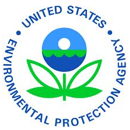 This week on our Instructor Spotlight is Lisa Teichgraeber, GreenEDU's LEED Instructor and Course Developer. Lisa joined GreenEDU in 2011, bringing over a decade of sustainable design, consulting, and public speaking experience to the classroom. As a GreenEDU Instructor, Lisa has trained hundreds of students on green building and LEED concepts, specializing in LEED Exam Prep.
This week on our Instructor Spotlight is Lisa Teichgraeber, GreenEDU's LEED Instructor and Course Developer. Lisa joined GreenEDU in 2011, bringing over a decade of sustainable design, consulting, and public speaking experience to the classroom. As a GreenEDU Instructor, Lisa has trained hundreds of students on green building and LEED concepts, specializing in LEED Exam Prep.Previously the Sustainable Design Coordinator at HMC Architects, Lisa has extensive field experience planning and implementing green design, and has coordinated successful certification for several LEED projects in southern California. Passionate about sustainability in her community, Lisa is also an appointed member of the City of Redlands Climate Action Task Force (CATF). Lisa earned her Bachelors of Architecture from California State Polytechnic University.
With over 440 reviews on GreenEDU, Lisa has received praise from her previous students. "There is some very technical content in this class and she did very well in delivering it," stated Peter W., a former student. "Lisa managed to kept the class interesting and interactive, yet, cover all materials on time. Overall, the class's experience was excellent and I am very happy to had Lisa as my LEED GA instructor," responded Aaron C.
Lisa teaches a wide variety of LEED Exam Preparation and Continuing Education courses, including:
- FREE Intro to LEED Accreditation Webinar
- FREE Intro to LEED CMP Webinar
- LEED Green Associate Exam Prep Webinar
- Educating the Client Webinar
- LEED for Contractors: A Primer for Compliance Webinar
- And many more!
We had the chance to ask Lisa a few questions about her work at GreenEDU and her teaching experience:
- Which class is your favorite to teach? Why is it your favorite class to teach?
My favorite classes are the ones that I get to teach in person. The students seem more willing to ask questions or make comments. That makes the in-person classes more much more dynamic and rewarding.
- What made you become a teacher?
In all honesty, the opportunity presented itself. A few years ago, I had the chance to teach a small group of clients (clients of the firm I was working for) that were interested in passing the LEED exam. I really enjoyed supporting them through the testing process. When I discovered the opportunity with Green Education Services it seemed like a natural fit. I applied and have been teaching LEED courses since 2011.
- What is your favorite thing about teaching?
I really enjoy the opportunity to interact with students. I consistently find that they are a wealth of information; bringing their professional knowledge to the LEED process that provides an enriching experience for me, the second is that teaching
- What do you do in your spare time/hobbies/recreational stuff?
I really love the design work that I’m able to do for clients, but the one thing about architectural design is the time it takes to actual realize the results. I have been working with fabric and yarn since I was a child and it is a great outlet to spend a couple of days on a project, have complete control over the outcome and see it finished. My other diversion currently involves the free online courses that are offered through sites such as Coursera or Kahn Academy. I’ve attended classes from issues on climate change to intro to coding - It’s amazing to be able to sign-up for any number of topics – all free of charge.
To register for a course with Lisa or to view our other webinars, please visit http://www.greenedu.com/webinars for more information!








.JPG)








